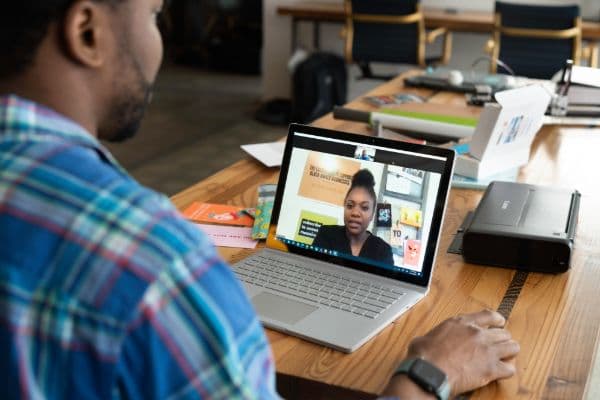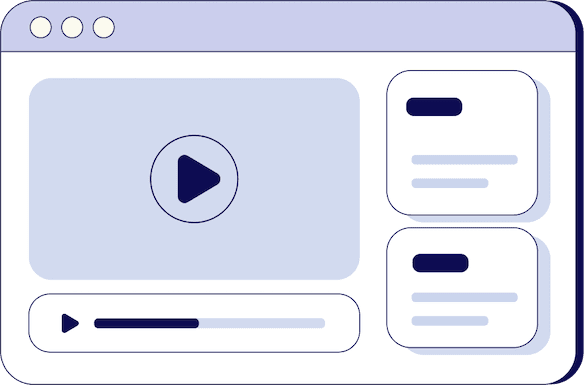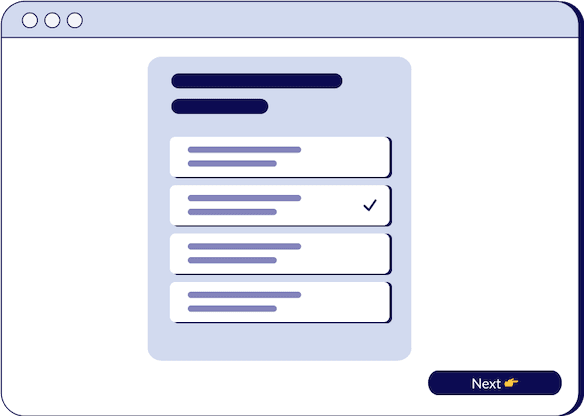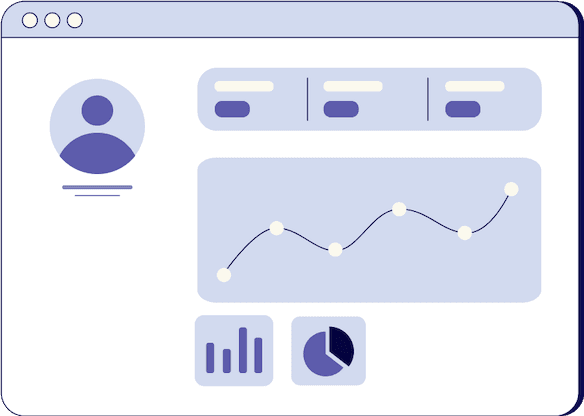
5-minute Sales Training: Nailing The Remote Presentation
Greg Volm
SVP of Sales

- duration
- 6 min
- Average Score
- 79%
- Stars
- 5
Have you ever wondered how the shift from in-person to remote sales has transformed the sales landscape? A recent study revealed that approximately 75% of sales calls are now conducted remotely, marking a significant shift in how business is done. This evolution is not just about changing locations; it involves a fundamental shift in sales strategies and communication techniques to align with the digital landscape. In this session, the focus is on the transition from traditional face-to-face interactions to remote sales, highlighting the challenges and opportunities this shift presents.
One of the primary challenges in remote sales is maintaining the same level of engagement and impact that one would have in an in-person meeting. The distance, often augmented by a screen, can create a sense of disconnect between the salesperson and the client. Sales professionals must not only adapt to this new environment but also excel in it, which requires a strategic overhaul in their approach. Leveraging technology effectively becomes paramount; tools such as video conferencing software, CRM systems, and digital presentation tools are no longer optional but essential components of a successful sales strategy. Moreover, sales representatives must refine their communication skills to be as effective on screen as they are in person. This involves not only mastering the art of speaking and presenting remotely but also becoming adept at reading digital cues and engaging clients in a virtual setting.
A World Full Of Distractions
Another critical aspect of adapting to remote sales is understanding the psychological and environmental factors at play. Clients participating in remote meetings may face numerous distractions, from emails popping up to the ease of multitasking in a familiar environment. Sales professionals need to be aware of these potential distractions and craft their sales pitches and presentations to be concise, engaging, and directly relevant to the client's needs. This approach helps in capturing and retaining the client's attention, making the remote sales call as impactful as an in-person meeting.
In this session, you'll learn more about adapting to the digital landscape in sales, focusing on practical, common-sense approaches that can be easily incorporated into daily activities. Embracing this change is not just about surviving in a remote sales environment but thriving in it. By understanding and effectively responding to the nuances of remote sales, sales professionals can continue to build high-performing sales teams and drive growth in their companies, regardless of the physical distance from their clients.
Crafting an Engaging Opening for Remote Sales Meetings
How can you ensure that your remote sales meeting grabs and retains your audience's attention from the get-go? In the realm of remote sales, the opening minutes of your meeting are crucial in setting the tone and engaging your audience. In this session, we dive deep into the art of crafting an engaging opening for remote sales meetings. The focus here is not just on starting the meeting but on starting it right, with a compelling agenda, clear objectives, and a roadmap to the ideal outcome.
A strong opening in a remote sales meeting hinges on a well-crafted agenda. This is not just a list of topics to be covered; it's a strategic tool to pique interest and set expectations. Avoid generic headers like "Product Overview" which may sound mundane. Instead, opt for something more captivating, such as "How Our Product Aligns with Your Needs". This approach instantly makes the agenda more relevant and intriguing to the audience. Additionally, assigning specific time slots to each agenda item and promising to end the meeting earlier than scheduled can create a positive impression, showing respect for the attendees' time. This tactic not only organizes the session but also conveys a message of efficiency and consideration.
The next crucial component is setting clear objectives. Why is this meeting happening, and what do you hope to achieve? Answering these two questions at the beginning of your session can significantly enhance its effectiveness. The objectives should be transparent and mutually beneficial, aiming to advance to the next stage in the sales process rather than aggressively pushing for a commitment. This clarity of purpose helps in aligning everyone's expectations and contributes to a more focused and productive discussion.
Personalizing introductions is another key strategy in engaging your audience. Instead of the standard practice of simply stating names and titles, delve a bit deeper. Encourage participants to share their involvement in the project, their knowledge about your product, and their purpose in the meeting. This not only breaks the ice but also provides valuable insights into each participant's perspective, allowing for a more tailored and relevant conversation. Moreover, if you can find a genuine and sincere connection with any of the participants, highlighting it can significantly boost your credibility. Remember, authenticity is crucial here; forced or vague connections can backfire.
Building and Demonstrating Credibility in Remote Sales
How do sales professionals establish themselves as credible and trustworthy figures in a remote sales environment? In remote sales meetings, credibility is the cornerstone of a successful interaction. This session explores how to build and demonstrate credibility, a crucial factor in establishing trust and authority with your audience. It's not just about what you sell, but how you present yourself and your understanding of the client's needs.
One of the most effective ways to build credibility is by demonstrating a thorough understanding of the client's business. This requires doing your homework before the meeting. Research the client's industry, recent news about their company, and any challenges they might be facing. This preparation enables you to tailor your presentation to address specific aspects of their business, showing that you're not just selling a product or service, but providing a solution that's relevant to them. For instance, if you're dealing with a client in the retail sector facing inventory management challenges, you can focus on how your product can streamline their supply chain and reduce costs.
Accurately summarizing the client's needs is another vital aspect of building credibility. This involves active listening during previous interactions and the initial part of the meeting. Summarize what you've understood about their needs and ask for confirmation. This approach not only ensures that you're on the right track but also shows the client that you are attentive and value their input. For example, start with a statement like, "Based on our last conversation, my understanding is that your main challenge is increasing lead generation without significantly raising costs. Is that accurate?"
Highlighting 'hot buttons' or key issues is a strategy that can significantly enhance your credibility. These are the issues that are most important to the client, and your ability to identify and address them can set you apart. When you present your solution, explicitly link its features and benefits to these hot buttons. Say something like, "You mentioned that user engagement is a key focus area. Our platform's interactive features are designed to increase user involvement, which directly aligns with your goals."
In a remote setting, conveying your expertise can be more challenging without the benefit of physical presence and body language. However, by combining in-depth knowledge of the client's business, active listening skills, and a clear demonstration of how your solution addresses their specific needs, you can effectively convey your expertise and establish credibility.
The Power of a Strong Closing in Remote Sales Presentations
What makes a closing in a remote sales presentation truly powerful and effective? While the opening of a sales call sets the tone, it's the closing that can make or break the deal. In this session, we focus on the key elements that contribute to a successful closing in remote sales presentations. It's not just about concluding the call; it's about leaving a lasting impression, ensuring clarity on the next steps, and striking the right balance between persuasion and respect for the client's decision-making process.
A strong closing begins with a concise summary of the key points discussed during the meeting. This summary serves to reinforce the main value propositions and aligns everyone on what has been covered. For instance, you might say, "To summarize, we've discussed how our solution can enhance your team's productivity by automating several routine tasks, allowing them to focus on more strategic initiatives." This not only helps in reiterating the benefits of your product or service but also ensures that any misunderstandings are cleared up before the meeting concludes.
Addressing final questions or concerns is another critical aspect of an effective closing. It demonstrates that you are not just there to sell, but also to listen and provide solutions. Encourage your clients to voice any lingering doubts or queries they might have. This can be done by asking, "Before we wrap up, are there any questions or concerns that you'd like me to address?" This approach not only helps in clarifying doubts but also in understanding the client's perspective better, which can be crucial for future interactions.
Setting clear next steps is crucial for moving the sales process forward. A vague or open-ended conclusion can lead to uncertainty and a loss of momentum. Clearly outline what the next actions are, whether it's scheduling a follow-up meeting, sending additional information, or starting a trial period. For example, "I will send over a detailed proposal by tomorrow, and let's schedule a follow-up call next week to discuss any questions you might have after reviewing it."
Finally, striking the right balance between being persuasive and respecting the client's decision-making process is vital. While it's important to be assertive and highlight the benefits of your offering, it's equally important to respect the client's timeline and decision-making process. Avoid high-pressure tactics that might lead to short-term gains but damage long-term relationships. Instead, focus on building a rapport and establishing trust, which are key to successful long-term partnerships.
In this session, you will learn more about these key elements that contribute to a strong closing in remote sales presentations. The aim is not just to conclude the meeting but to do so in a manner that leaves a positive, lasting impression and sets the stage for future interactions. Watch this session for insights into crafting a closing that effectively moves your sales process forward while maintaining a respectful and professional relationship with your client.
How Triple Session works
Training, Testing, & Feedback
Triple Session's proven formula accelerates your sales performance through consistent, organized practice, backed by measurable results.

Bite-Sized Knowledge
Our expert-led video sessions simplify complex sales concepts into easy-to-digest 5-15 minute videos for better retention.

Test Your Understanding
After each session, there will be a quiz to test your understanding and help you improve on any areas that need more attention.

Evaluate and Grow
Get progress snapshots after each quiz to track your improvements and achieve your sales mastery goals.